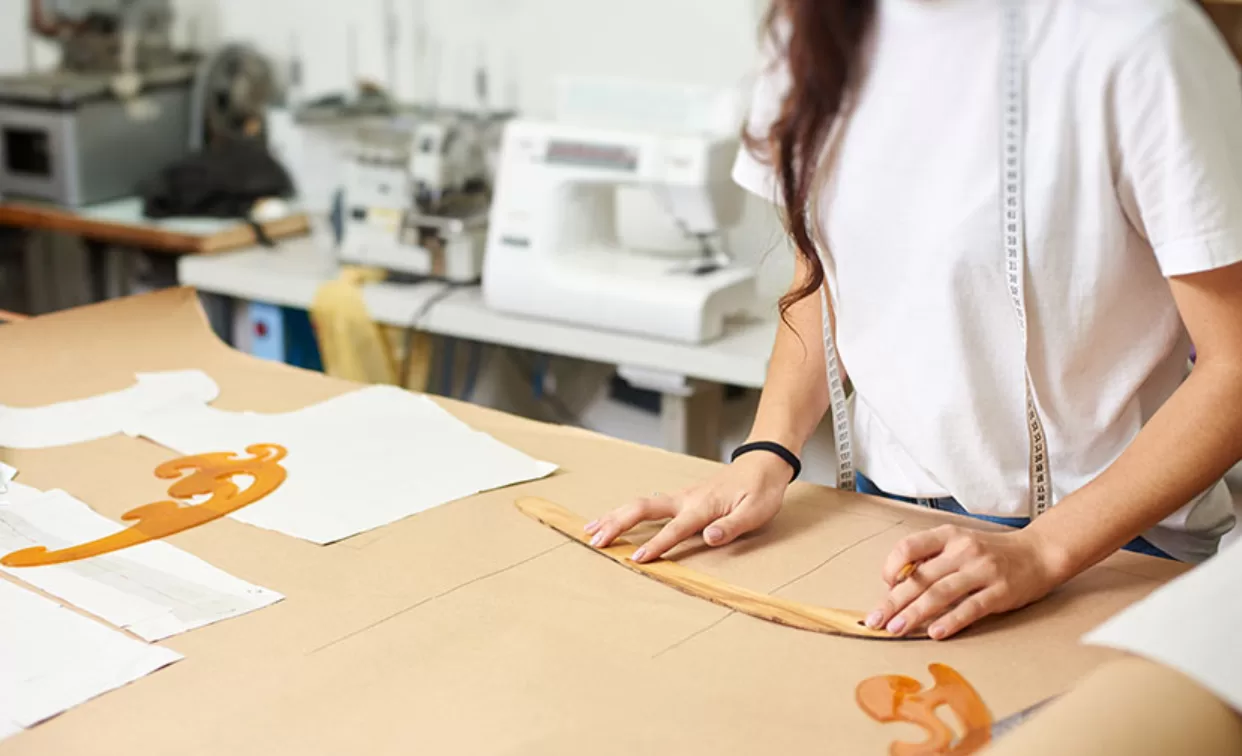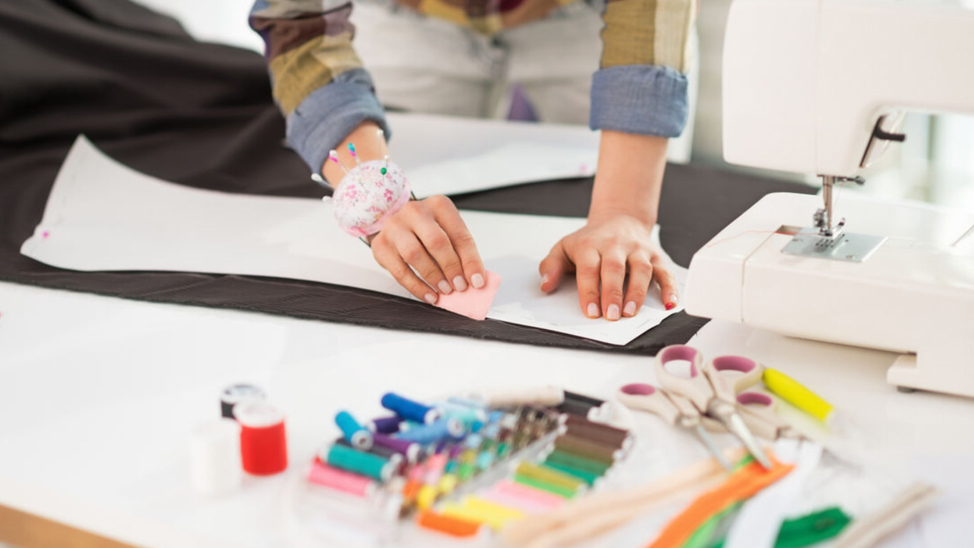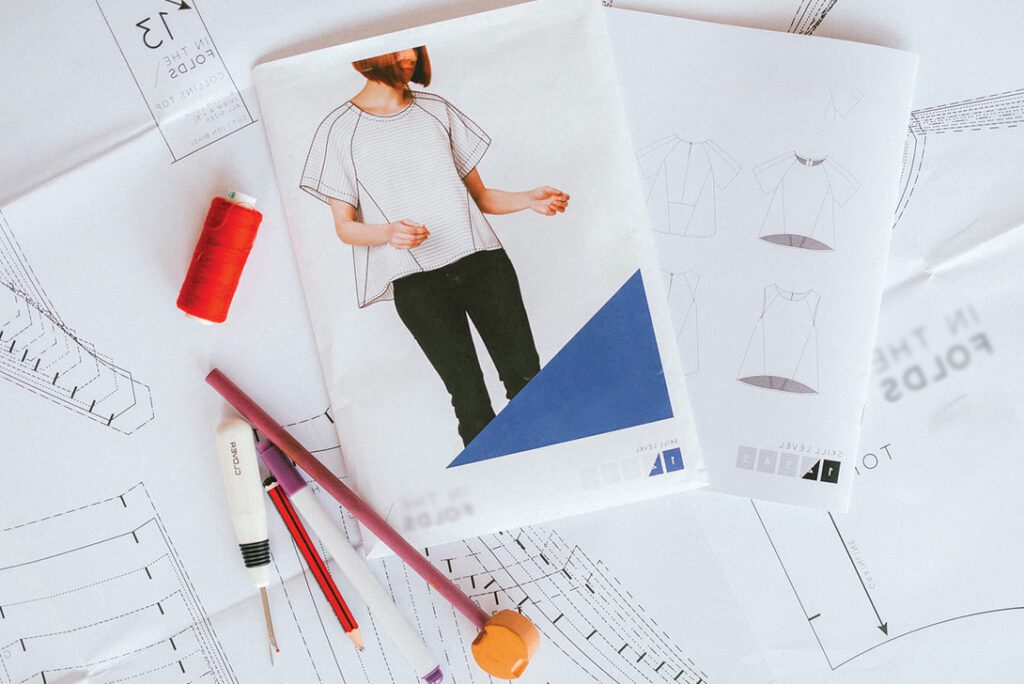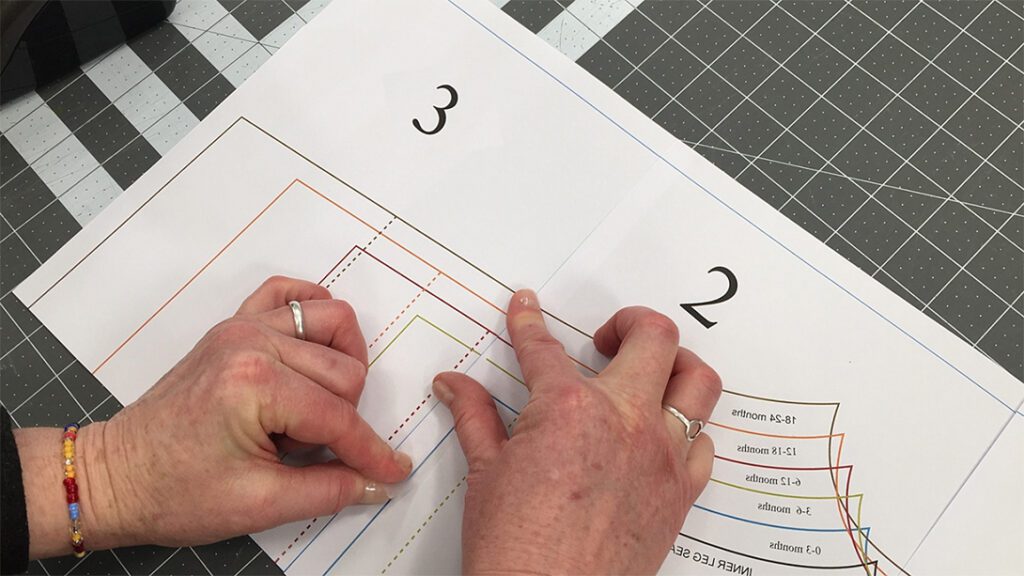
The Big Four pattern companies, which includes Butterick, McCalls, Vogue, and Simplicity (the first three, now owned by a single outfit), are no longer stand-alone pattern companies. Instead, they now appear to have become holdings of various other entities. And these businesses often appear to be holdings of various other entities where the industry appears to be what was once called “sundries.” That means that the companies are no longer focused on the sewists.
The idea behind a centralized large pattern business has ended, and it is now the time for more agile and smaller companies (some outstanding, others not that great) to start taking over. That is all fine, and a part of this industry is naturally reconfiguring itself.
The Past
Butterick
In 1863, Butterick launched The Butterick Company to produce heavy cardboard templates for kids’ clothing. Butterick’s innovation involved providing each pattern in various graded, standard sizes.
His family members folded and cut the first of these patterns, and he used them first to sell them from his home. In 1866, Butterick started manufacturing a range of patterns for women, and at a later stage, they added men’s clothing.
In 1873, Butterick began publishing a fashion magazine, The Delineator, with patterns inside. Their first patterns included tissue paper (unprinted) cut into shapes and held and folded together with pinned labels (later pasted-on) with first an image and, at a later stage, brief instructions.
By the early 1900s, they started using envelopes to hold these patterns. By the late 1910s, separate instruction sheets were introduced, called the “Deltor” (taken from the first three and last three letters of Delineator). They purchased two new presses in 1948, designed to directly print the markings onto the tissue patterns.
McCall
In 1870, James McCall, a tailor from Scotland, established the McCall Pattern Company in New York. Until 1919, patterns were still unprinted, but after this, they started directly printing information onto the patterns. By the 1920s, some designs started featuring full-color illustrations on the envelopes of the patterns.

By 1932, all the pattern envelopes started featuring full-color images. McCall was also known for printing the release date on all their envelopes (the only company that did this consistently before the mid-century), which made it much easier to date these patterns.
Simplicity
In 1927, Simplicity Pattern Co. Inc began producing patterns. They had a focus on creating lower-priced, easy-to-use patterns. They were also among the fastest pattern companies to expand, opening offices in Australia, London, Canada, and several across the U.S. The patterns they produced were sold in more than 60 countries. In 1946, their line of unprinted patterns ended, and they were all printed from then on. Simplicity manufactured DuBarry patterns from 1931 to 1946 exclusively for the F.W. Woolworth Company.
Vogue
In 1899, Vogue Pattern Service started one of the spinoffs of the weekly pattern feature in Vogue Magazine. In 1909, Condé Nast purchased Vogue, which resulted in the formation of the Vogue Pattern Company in 1914. By 1916 Vogue patterns were on sale in many department stores. In 1961, Butterick Publishing bought Vogue Pattern Service (which also licensed the Vogue name).
The Big 4 was lost for most of us some time ago as we could not accept the effort and time to conduct the various fit changes needed to make garments work. RTW was not much better since there wasn’t much when it came to plus sizes in the 1990s that would work for our “corporate wardrobe.”

The old Green Pepper, Kwik Sew patterns, and McPhee patterns kept us interested. The MacPhee workshop had one of its franchises in Prince George, where we took classes and bought patterns from. They also had a few essential plus-size items that fit. Everyone enjoyed the styles and fit and rarely needed any serious alterations for the garment to work. Most patterns are based on interesting hacks, which is why they are used frequently since the designs offer multiple sizes.
The Present
Simplicity/New Look/Printed Burda
The only thing that we can say about these patterns today is according to what we see online. Several years back, New Look and Simplicity decided to no longer sell in Canada, and many sewists will never forgive them for this.
With this in mind, despite a difficult-to-navigate and annoying website, New Look and Simplicity are doing alright with staying up-to-date with the latest tastes in clothing. The selection is small, but they are competitive in the design, especially the consistent offering of interesting vintage patterns. They are focused on remaining relevant and appreciating these businesses.
But how long will this last when comparing the orientation of the gift store to other products that the parent company currently owns?

Vogue/Butterick/McCalls/Kwik Sew
We are under the impression that “corporate” may have abandoned McCalls and Butterick. Both lines had very few season offerings for Fall (10 patterns for Butterick and 9 for McCalls), and neither had anything new to offer for the Winter or Holiday season.
Kwik Sew, which was once one of the best flagship brands for people who enjoy sewing knits, appears to have turned into a brand that is now a “craft pattern” company. That is okay if you are sewing clothes for dolls or your dogs, but not if you plan to sew garments yourself (aprons are the exception). There are only a few garment patterns in the Kwik Sew Spring, Winter, or Holiday catalog.
Which has left us with Vogue.
Vogue was once the proud home for many fantastic patterns most of us used. Like its competitors, Vogue also put out a minimal offering this season. With only 12 new designs featured in the holiday/winter combo, the range of designer patterns has disappeared altogether.
But to give them a bit of credit, the slim collection included a few meaty and exciting patterns for the real sewists, which is enjoyable to see, especially after the countless similar, easy tee shirts or pullover dresses in many of the Indie lines.
The Future
In short, if you have collected Big 4 paper patterns – keep them.
Some of the patterns were extremely good. However, nowadays, these brands and their future of something we have been using for such a long time could be better at best.
It is known that change is the sole constant. Sadly, the success or future of patterns we have been sewing our entire lives looks very insecure.
We hope that seeing such challenging patterns is something sewists can put their minds to and continue to make available.
We might go into the following years with only the Simplicity groups and Vogue producing patterns while Kwik Sew continues focusing more on crafts. It should not come as a surprise since three paper pattern companies under a single portfolio are too much unless each is branded differently. In this case, this didn’t happen.
However, there are a few things these pattern companies should have done to help their businesses.
– Overhauling Fit
What is entirely different from the RTW fit? Unfortunately, many sewists need more patience when creating patterns from the Big Four, where the end product turns out way too big and altogether different from the line art presented on the envelope.
– More Useful Instructions
Sewing pattern companies should update instructions to match the latest machines and contemporary techniques. Why is the “for knit patterns” still issued without any references to sergers? Instead, they provide instructions on double-straight stitched seams. They should do away with the cut-and-paste guide sheets made up of instructions initially written decades ago.



